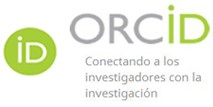Proposal for community intervention in Carchi schools for the early diagnosis of keratoconus, Ecuador, 2022
DOI:
https://doi.org/10.62697/rmiie.v4i1.131Keywords:
Community intervention, diagnosis, keratoconusAbstract
Keratoconus has become a frequent clinical condition in Optometry and Ophthalmology consultations. This alteration not only produces, according to its magnitude, the deterioration of visual acuity but also affects the quality of life of people who suffer from it. The purpose of this work was to design a community intervention proposal for the early diagnosis of keratoconus in schools in the Carchi community in Ecuador during the first quarter of 2022. A methodology based on a participatory and collaborative approach of the participating community members was used. Surveys and interviews were applied that allowed the initial diagnosis in relation to the needs, availability of resources and interests of the population. Intervention strategies appropriate to the particularities of the locality were designed, encouraging the inclusion and empowerment of the participants. Visual health promotion activities were implemented, with a flexible approach that allowed real-time adjustments based on the results and responses of the community. In addition, a frequent, interactive and summative evaluation was carried out to assess the long-term sustainability of the intervention and measure its impact. After the intervention was applied, 85.4% of the study sample reached a high level of knowledge, which corroborates the effectiveness of each of the activities developed.
Downloads
References
Asun, D., & Páez Rovira, D. (1994). Psicología Comunitaria y Salud Mental en Chile. Anthropos: Boletín de información y documentación, 44, 1101-104. https://dialnet.unirioja.es/servlet/articulo?codigo=279698
Benítez Merino, M. D., López Dorta, N., Cárdenas Díaz, T., Guerra Almaguer, M., Noriega Martínez, J., & Castillo Pérez, A. (2019). Topoaberrometría en pacientes con queratocono. Revista Cubana de Oftalmología, 32(2). http://scielo.sld.cu/scielo.php?script=sci_arttext&pid=S0864-21762019000200007
Condo Reyes, A., & Cervantes Anaya, L. (2022). Alternativas terapéuticas del Queratocono. VIVE: Revista de Investigación en Salud, 5(15), 841-851. https://doi.org/https://doi.org/10.33996/revistavive.v5i15.192
Fernández Vega Cueto, L., Lisa, C., Alfonso Bartolozzi, B., Madrid Costa, D., & Alfonso, J. (2021). Intrastromal corneal ring segment implantation in paracentral keratoconus with perpendicular topographic astigmatism and comatic axis. European Journal of Ophthalmology, 3(4), 1540-1545. https://doi.org/https://doi.org/10.1177/1120672120952346
Gallo, S., Angelini, J., Acosta, D., & Albertazzi, R. (2018). Evaluación de la variación de la agudeza visual y de la queratometría en pacientes con queratocono luego de la cirugía de anillos intracorneales. Oftalmología Clínica y Experimental. https://oftalmologos.org.ar/oce_anteriores/items/show/384
Martínez Afanador, A., & Urrea Victoria, T. (2015). Revisión de Queratocono y su Enfoque como Enfermedad Inflamatoria. Revista Sociedad Colombiana de Oftalmología, 48(3), 246-255. https://docs.bvsalud.org/biblioref/2018/09/915239/revision-de-queratocono.pdf
Osorio García, L., Gómez Giraldo, L., & Fierro Peña, L. (2018). Actualización en el manejo integral del queratocono. (Tesis de pregrado). Fundación Universitaria del Área Andina.
Plata Luque, J. (2022). Retinoscopia Estática vs Autorefractometría. https://visionyoptica.com/retinoscopia-estatica-vs-autorefractometria/
Teus, M., Arranz Márquez, E., López Guajardo, L., & Jiménez Parras, R. (2007). Fondo de Ojo. An Pediatr Contin, 5(3), 163-166. https://www.elsevier.es/index.php?p=revista&pRevista=pdf-simple&pii=S169628180774129X&r=51
Visioncore. (2020). Por qué es importante el diagnóstico precoz del queratocono. https://visioncore.es/por-que-es-importante-el-diagnostico-precoz-del-queratocono
Downloads
Published
How to Cite
Issue
Section
License
Copyright (c) 2025 Yoandra Licea-Reyes, Osmani Correa-Rojas, Willian Francisco Cando-Chuquizán

This work is licensed under a Creative Commons Attribution-NonCommercial-ShareAlike 4.0 International License.
Authors who publish in Revista Mexicana de Investigación e Intervención Educativa (RMIIE), of Universidad Pablo Latapí Sarre agree to the following terms:
1. Copyright
Authors retain unrestricted copyright to their work. Authors grant the journal the right of first publication. To this end, they assign the journal non-exclusive exploitation rights (reproduction, distribution, public communication, and transformation). Authors may enter into additional agreements for the non-exclusive distribution of the version of the work published in the journal, provided that acknowledgment of its initial publication in this journal is given.
© The authors.
2. License
The articles are published in the journal under the Creative Commons Attribution-NonCommercial-ShareAlike 4.0 International License (CC BY-NC-SA 4.0). The terms can be found at: https://creativecommons.org/licenses/by-nc-sa/4.0/deed.en
This license allows:
- Sharing: Copying and redistributing the material in any medium or format.
- Adapting: Remixing, transforming, and building upon the material.
Under the following terms:
- Attribution: You must give appropriate credit, provide a link to the license, and indicate if any changes were made. You may do this in any reasonable manner, but not in any way that suggests the licensor endorses or sponsors your use.
- NonCommercial: You may not use the material for commercial purposes.
- ShareAlike: If you remix, transform, or build upon the material, you must distribute your creation under the same license as the original work.
There are no additional restrictions. You may not apply legal terms or technological measures that legally restrict others from doing anything the license permits.












